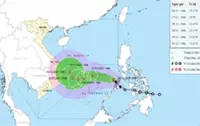Starting young: Seven-year-old Lourene Paul Raj (left) learning Chinese with her tutor Afifah Mohd Rafidzah, who learnt how to speak and write Mandarin at age five. — GRACE CHEN/The Star
IRFAN Syah Mahdifarid, 23, a faith and fatwa student at Universiti Sains Islam Malaysia can speak Malay, English and Arabic. Now, the 23-year-old wants to add Mandarin to his list of languages.
The Selangor native was inspired to learn the language when he received a RM2 discount from a Chinese shopkeeper after breaking the ice by asking for the price in Mandarin.





